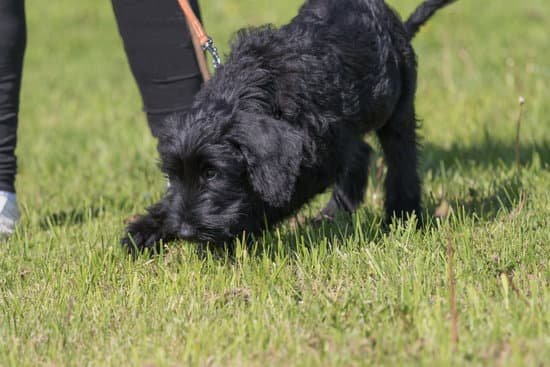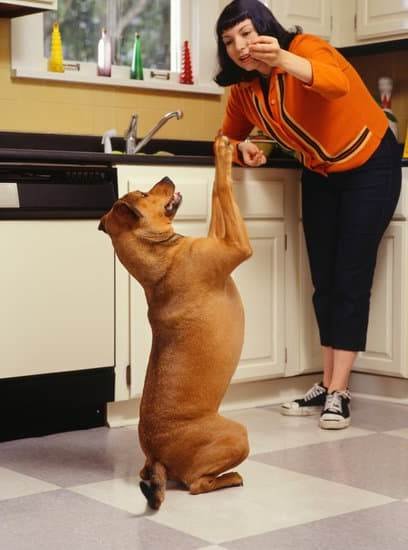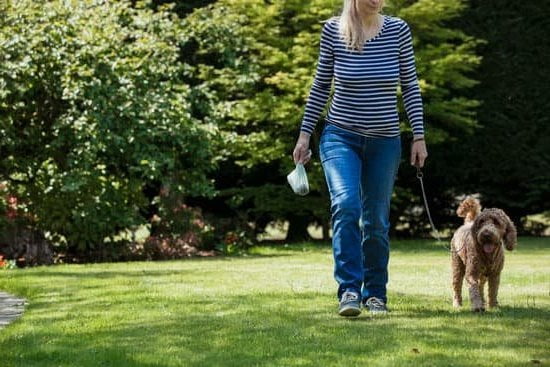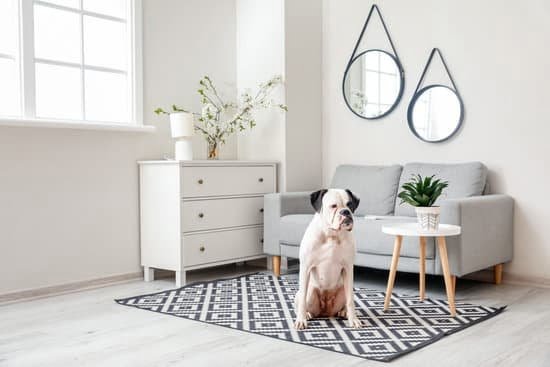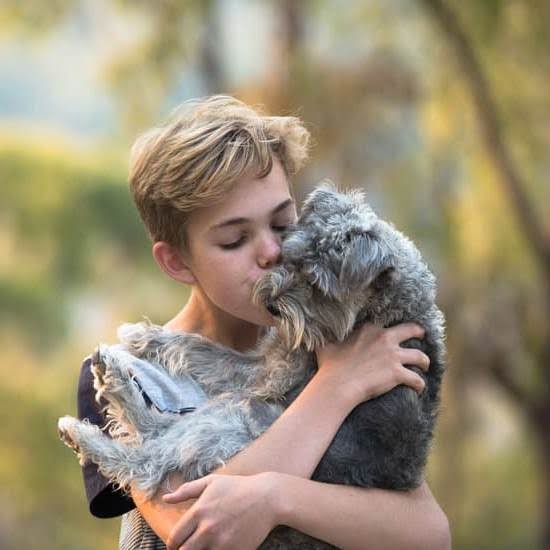Can old dogs be trained to be inside? Despite the common misconception that older dogs cannot learn new tricks, the truth is that with patience, consistency, and the right techniques, even senior canine companions can be successfully trained. Training older dogs to be inside not only benefits the pet owner but also improves the quality of life for the dog.
Training older dogs to be inside can provide a sense of security and comfort for them, especially if they are experiencing health issues or difficulty moving around outdoors. It can also strengthen the bond between pet and owner, as it allows for more time spent together in a safe and controlled environment. Additionally, teaching old dogs new behaviors can stimulate their minds and help prevent cognitive decline.
While training old dogs to be inside may present some challenges such as ingrained behaviors or physical limitations, it is important to approach the process with understanding and patience. Consistency in training methods is key, as well as being mindful of the dog’s individual needs and capabilities. By setting realistic expectations and celebrating small victories along the way, pet owners can successfully transition their older canine companions to being indoors.
Understanding the Benefits of Training Older Dogs to Be Inside
Old dogs may have a reputation for being set in their ways and less adaptable to change, but that doesn’t mean they can’t be trained to be inside. In fact, training older dogs to be indoors can bring about a host of benefits for both the pet and their owner. Here are some advantages of training older dogs to be inside:
- Comfort and safety: Older dogs may struggle with extreme weather conditions or feel uncomfortable outdoors due to age-related issues. Training them to be inside can provide a safe and comfortable environment for them.
- Bonding time: Spending time indoors with your older dog can strengthen your bond and create valuable moments of companionship.
- Health benefits: Indoor training can help regulate your dog’s exercise routine, diet, and overall well-being, leading to improved health outcomes in their golden years.
While there are numerous benefits to training older dogs to be inside, it’s essential to understand that this process comes with its own set of challenges. It’s important to acknowledge these obstacles upfront so that you can approach the training journey with realistic expectations and strategies in place.
- Past habits: Older dogs may have established habits from their previous living situations that could make indoor training more challenging.
- Health concerns: Age-related health issues or physical limitations may affect an older dog’s ability to adapt to an indoor environment comfortably.
- Patience and consistency: Training an old dog requires patience, consistency, and understanding of their individual needs and limitations.
By recognizing these challenges and addressing them with empathy, patience, and persistence, you can successfully train your old dog to be inside. With the right approach, dedication, and support, you’ll soon see positive results from your efforts.
Assessing the Challenges of Training Old Dogs to Be Inside
As pet owners, it is important to understand that old dogs can indeed be trained to be inside just like younger dogs. While it may pose some challenges, with the right approach and techniques, older dogs can learn new behaviors and adapt to living indoors. It is crucial to have patience, consistency, and a positive attitude when embarking on this training journey with your senior canine companion.
When assessing the challenges of training old dogs to be inside, it is essential to consider factors such as ingrained habits, physical limitations, and potential health issues that may affect their ability to adapt. Older dogs may have spent a significant portion of their lives outdoors or in different environments, making it harder for them to adjust to being inside.
Additionally, senior dogs might also have age-related conditions such as arthritis or hearing loss that could impact their learning abilities.
Despite the challenges that come with training old dogs to be inside, it is important not to underestimate their intelligence and capacity for learning. With the right approach and consistent training methods, older dogs can successfully transition into indoor pets. Here are some tips and techniques that can help you overcome the obstacles encountered during the training process:
- Establish a consistent routine: Set specific times for feeding, potty breaks, playtime, and training sessions.
- Use positive reinforcement: Reward your older dog with treats, praise, or toys when they exhibit desired behaviors.
- Be patient and understanding: Remember that older dogs may take longer to learn new commands or behaviors due to age-related factors.
By acknowledging the challenges faced when training old dogs to be inside and utilizing effective strategies tailored to their individual needs, pet owners can create a comfortable living environment for their senior canine companions. With dedication, love, and perseverance, older dogs can thrive indoors just as effectively as younger pups.
Exploring the Importance of Patience and Consistency in Training Older Dogs
Older dogs can indeed be trained to be inside with the right approach, patience, and consistency. When it comes to training older dogs, these two factors play a crucial role in the success of the training process.
It is important to understand that older dogs may have established habits and behaviors that could take more time to change compared to younger dogs. Patience is key when working with older dogs, as they may require more time to adapt to new routines and commands.
Consistency is equally important when training older dogs to be inside. This means sticking to a regular training schedule, using the same commands consistently, and providing positive reinforcement whenever they exhibit desired behaviors. Older dogs thrive on routine and predictability, so maintaining consistency in your training approach can help them learn new behaviors more effectively. Additionally, consistency helps build trust between you and your dog, making the training process smoother and more successful overall.
By incorporating patience and consistency into your training regimen, you can help your old dog successfully transition to being an indoor pet. Remember that every dog is different, so it’s important to tailor your approach based on your dog’s individual needs and personality. With time, effort, and dedication, even older dogs can learn new tricks and behaviors that make them happy indoor companions for years to come.
| Patience | Consistency |
|---|---|
| Older dogs may need more time to adapt | Sticking to a regular training schedule |
| Patience is key in changing established habits | Using the same commands consistently |
| Building trust through patience and consistency | Providing positive reinforcement for desired behaviors |
Tips and Techniques for Successfully Training Old Dogs to Be Inside
Old dogs can definitely be trained to be inside, contrary to the common misconception that they are set in their ways and cannot learn new habits. In fact, older dogs can be just as receptive to training as younger ones, with the right approach and techniques.
Training an old dog to stay indoors can have numerous benefits, such as providing them with a safe and comfortable environment, improving their behavior and manners, and strengthening the bond between the pet and their owner.
When it comes to successfully training older dogs to be inside, patience and consistency are key factors. Older dogs may take longer to pick up on new commands or behaviors compared to puppies, so it’s important for owners to remain patient throughout the training process.
Consistency in training methods, routines, and expectations will help reinforce desired behaviors in older dogs. Positive reinforcement techniques, such as treats or verbal praise, can also go a long way in motivating older dogs during training sessions.
One effective tip for training old dogs to be inside is to establish a designated area or spot for them within the house. This could be a comfortable bed or crate where they feel safe and secure.
Using cues like verbal commands or hand signals can help communicate what is expected from the dog when it comes to being indoors. Creating a routine that includes regular potty breaks, exercise, playtime, and feeding schedules can also aid in successfully acclimating older dogs to being inside the house.
| Benefits of Training Older Dogs Indoors | Importance of Patience & Consistency |
|---|---|
| Provide safe & comfortable environment | Key factors in successful training |
| Improve behavior & manners | Help reinforce desired behaviors | Strengthen bond between pet & owner |
Setting Realistic Expectations for the Training Process
Old dogs have gained a reputation for being set in their ways and unable to be trained, especially when it comes to being inside the house. However, this common misconception couldn’t be further from the truth. With patience, consistency, and the right techniques, old dogs can indeed be trained to be inside just like their younger counterparts. It’s important for pet owners to understand that age is not a barrier to learning new behaviors.
Training older dogs to stay indoors can have numerous benefits for both the pet and the owner. Senior dogs may experience health issues or mobility challenges that make it unsafe for them to spend extended periods of time outside. By teaching an old dog to stay inside, you can ensure their safety and comfort while still providing them with mental stimulation and companionship. Additionally, having an indoor-trained dog reduces the risk of escape or getting lost.
Of course, training old dogs to be inside comes with its own set of challenges. Older dogs may have established habits or behaviors that are difficult to break, making the training process more challenging than with a puppy. It’s important for pet owners to approach the training process with patience and understanding, as it may take longer for an older dog to learn new routines.
Consistency is key in reinforcing positive behaviors and helping your senior dog adjust to life indoors. With dedication and a positive attitude, you can successfully train your old dog to be inside and enjoy all the benefits that come with it.
Sharing Success Stories of Old Dogs Who Have Been Successfully Trained to Be Inside
Old dogs can indeed be trained to be inside, and many success stories prove that with patience, love, and consistency, older dogs can adjust to a new indoor lifestyle. It’s important to address the common misconception that old dogs are set in their ways and cannot learn new tricks. In reality, older dogs are capable of learning and adapting to new environments with the right training techniques.
Benefits of Training Older Dogs to Be Inside
Training older dogs to be inside comes with numerous benefits for both the dog and its owner. For older dogs who may have mobility issues or medical conditions, being indoors provides a safe and comfortable environment. Indoor training can also strengthen the bond between the dog and its owner, as it requires time spent together working on commands and building trust. Additionally, having an indoor-trained dog can reduce behavioral issues such as barking or destruction when left alone outside.
Tips and Techniques for Successfully Training Old Dogs to Be Inside
When embarking on training an older dog to be inside, it’s essential to start with basic obedience commands such as sit, stay, and come. Use positive reinforcement methods like treats, praise, and rewards to encourage good behavior.
Consistency is key in training older dogs – set a routine for feeding, potty breaks, walks, and playtime to help them adjust to their new indoor environment. Remember that each dog is unique and may require different approaches to training; be patient and adapt your techniques as needed throughout the process.
Addressing Common Myths and Misconceptions About Training Old Dogs
Older dogs may have a reputation for being set in their ways, making some believe that they cannot be trained to adapt to new environments or behaviors. However, this is a common misconception that can be debunked with the right approach and techniques. Training old dogs to be inside can indeed be done successfully, providing numerous benefits for both the dog and its owner.
Benefits of Training Older Dogs to Be Inside
Training an older dog to be inside can improve their quality of life by keeping them safe from outdoor dangers such as traffic or extreme weather conditions. Additionally, it can strengthen the bond between the dog and its owner, as the training process requires communication, trust, and cooperation. Older dogs who are trained to be inside also tend to experience less stress and anxiety, leading to a happier and more contented pet.
Challenges of Training Old Dogs to Be Inside
While training older dogs to be inside comes with numerous benefits, it also presents some challenges. Older dogs may have ingrained habits or behaviors that make the training process more difficult. Health issues or physical limitations can also impact their ability to learn new routines. Patience and consistency are crucial when facing these challenges, as it may take more time and effort to break old habits and establish new ones in older dogs.
Conclusion
Training old dogs to be inside is not only possible but also incredibly beneficial for both the pet and the owner. Many people mistakenly believe that older dogs are set in their ways and cannot learn new behaviors, but with love, patience, and consistency, they can definitely be trained to adapt to an indoor lifestyle. The key lies in understanding the benefits of such training and being committed to the process.
One of the main advantages of training older dogs to be inside is the bond it creates between the dog and its owner. By spending quality time together during training sessions, both parties develop a deeper understanding of each other’s needs and behaviors. Additionally, having an older dog indoors can lead to a stronger sense of security for them, as they are more protected from external threats and harsh weather conditions.
While there may be challenges along the way when training old dogs to be inside, such as stubbornness or health issues, these obstacles can be overcome with patience and consistency. It is important for owners to understand that results may not happen overnight, but with dedication and perseverance, progress
Remembering that every dog is unique and progresses at their own pace is crucial in successfully transitioning them to an indoor environment. Ultimately, by approaching this process with love, patience, and consistency, owners
Frequently Asked Questions
Is It Possible to Housetrain an Older Dog?
It is definitely possible to housetrain an older dog, although it may take more time and effort compared to a younger puppy. Consistency, positive reinforcement, and patience are key when teaching an older dog new habits.
At What Age Is It Too Late to House Train a Dog?
There isn’t a set age where it’s too late to house train a dog, as every dog is different. However, the older the dog gets, the more challenging it may become due to established habits. With dedication and consistency, even old dogs can learn new tricks.
How Do I Get My Adult Dog to Use an Indoor Potty?
To get your adult dog to use an indoor potty, start by choosing a designated spot and using positive reinforcement when they eliminate there. Consistency is key – take them to the spot frequently and praise them when they go in the right place. Patience and persistence will be important in transitioning your adult dog to using an indoor potty effectively.

Welcome to the blog! I am a professional dog trainer and have been working with dogs for many years. In this blog, I will be discussing various topics related to dog training, including tips, tricks, and advice. I hope you find this information helpful and informative. Thanks for reading!

